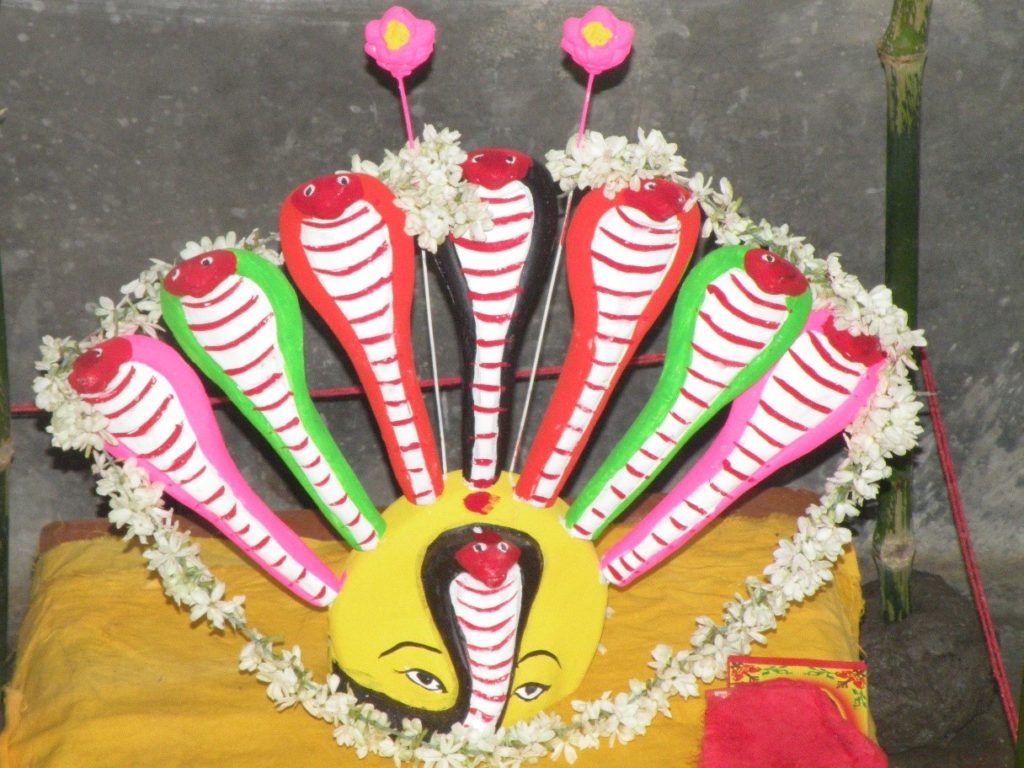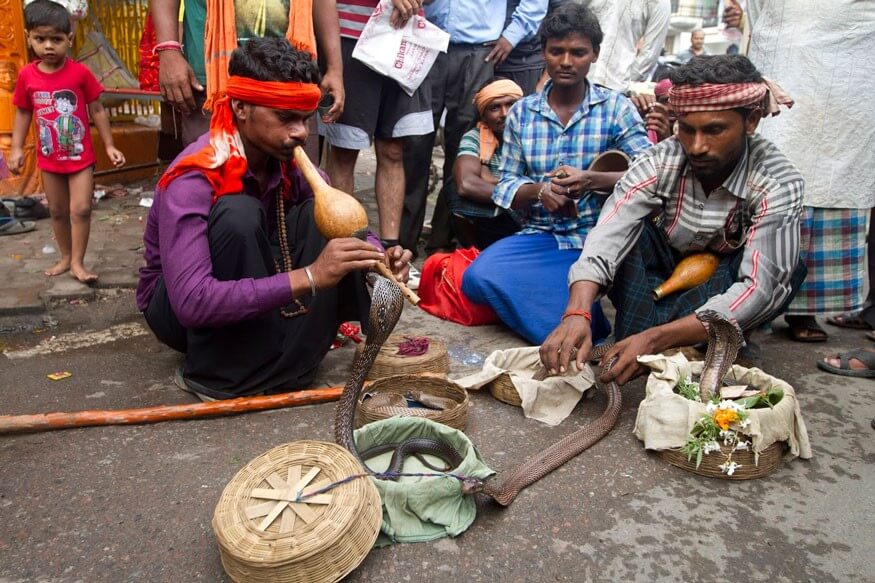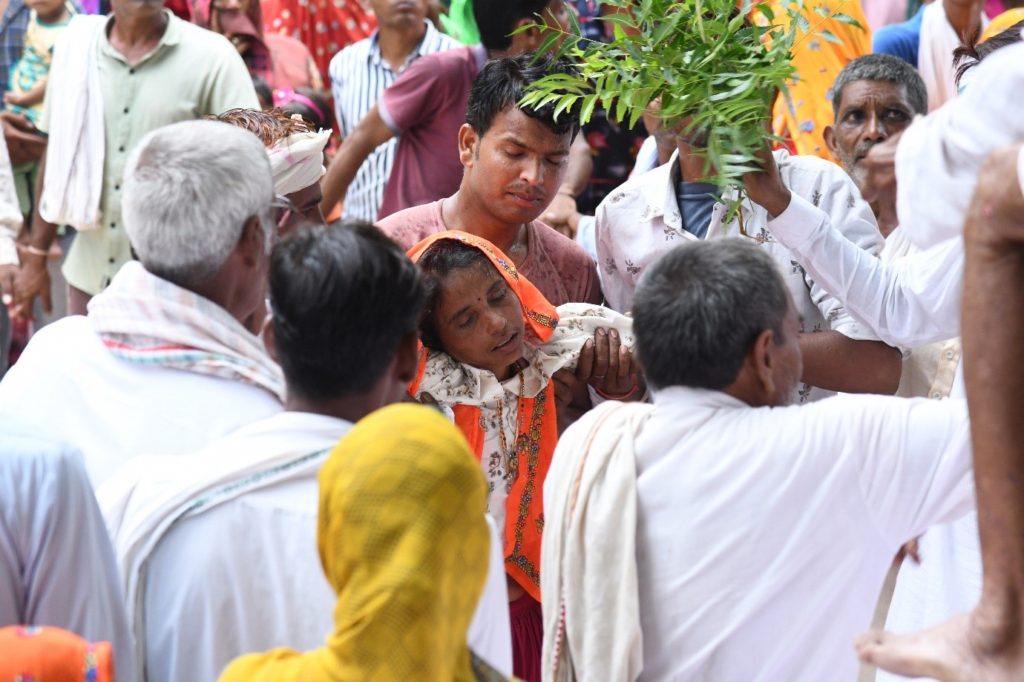Ignorance is not bliss: A perspective on the neglected snakebite problem in India
The unforeseen peril
Agriculture is the primary occupation of around 58% of the Indian population. Over the past few decades, agricultural communities have been bearing the brunt of human-animal conflicts arising due to the destruction of natural habitats and wildlife corridors. While wild deer and boars can be a huge menace for food crops, large mammals, such as elephants, can also pose a threat to the lives of the poor farmers. But in addition, amongst the bushes and vegetation, leaves and firewood, lurk the unforeseen peril – the deadly snakes.
In my Indian household, I grew up listening to innumerable mythological tales on snakes. While many of them portrayed snakes as gods, some depicted them as evil and vengeful demons. Snakes have always played an indispensable role in the Indian agroecosystem by controlling the population of rodent pests and protecting food crops from damage. Yet snakes are often synonymised with fear because a snakebite is synonymous with death. As per the report published in 2020, even in the age of artificial intelligence, over 58,000 people die annually due to snakebites in India. A shocking 90% of the total snakebite deaths happen in Indian villages and most victims inhabit the poorest, remote locations that are deprived of basic health facilities, preventing them from accessing appropriate treatment on time.

The snake goddess. Courtesy: Shibajee Mitra, Secretary, BRCS
The cause and effect
India is a biogeographically diverse country, harbouring a variety of flora and fauna distributed across distinct agroclimatic zones. While over 300 species of snakes have been described to this date, only ~60 species could be potentially harmful to humans. Russell’s viper (Daboia russelii) is one amongst those species and is solely responsible for nearly half of the snakebite casualties and disabilities in the country. Predominantly a rodent specialist, D. russelii are often encountered near farmlands and human habitats that serve as bounteous sources of rodents. Snakes actively inject their venom through specialised fangs, for offence and/or defence. Venoms are complex concoctions of deadly toxins (mostly proteins) that target different organs and physiological systems, acting rapidly to immobilise prey or deter a predator. However, when uninformed humans venture out barefoot, particularly after dusk (or) without flashlights, they step on an unsuspecting snake. Though the snake often retreats in fear or strikes back by delivering a dry bite, one unfortunate moment of negligence leads to deadly envenomation.

Snake charmer show. Courtesy: Bibek Mondal, Project Coordinator, Saving Tiger Society
Snakebite envenomation is a medical emergency that requires immediate clinical intervention, and the delay in treatment often leads to irreversible morbidities or mortality in extreme cases. But several impoverished communities remain blinded by local faiths and adopt superstitious healing practises over the scientifically proven antivenom therapy. Additionally, there are delays associated with the lack of transportation facilities, under-equipped health-care centres, inexperienced clinicians, and unavailability of sufficient antivenoms, which risk the lives of hundreds of thousands of victims.

Traditional snakebite treatment in rural India. Courtesy: Dr Dharmendra Khandal, Conservation Biologist
The acknowledgement and advancement
Studies from our lab at the Centre for Ecological Sciences, Indian Institute of Science, Bengaluru, have revealed disturbing inefficacies in the current antivenom therapy, particularly due to lack of research integrating the biological, preclinical, and epidemiological aspects of snakebite. Therefore, we, at the Evolutionary Venomics lab, headed by Dr Kartik Sunagar, are employing a multidisciplinary approach to address various aspects of this problem. In addition to employing state-of-the-art research, we are actively collaborating with herpetologists, the major commercial antivenom manufacturers, and scientists from a diversity of backgrounds across the globe for the development of effective and affordable snakebite therapeutics. We also hope to convene clinicians, NGOs, governmental bodies, and global health policymakers to advocate for infallible strategies for mitigation of snakebite problem in India. Though the COVID-19 lockdown has currently deterred the progress of our monsoon sampling schedules, lab work and advocacy programmes, we are constantly involved in public outreach, which is an integral part of snakebite management. This blog is licensed under a Creative Commons Attribution-NonCommercial 4.0 International Licence. View a copy of this licence at https://creativecommons.org/licenses/by-nc/4.0/
Having lived all my life in a metropolitan city, I was oblivious to the magnitude of the snakebite problem and challenges in snakebite mitigation until I stepped into the Evolutionary Venomics Lab. Despite the technological, cultural, and economic advancements, rural India remains to be the snakebite hotspot of the world due to lack of awareness and acknowledgement from other sections of the society. Therefore, I believe that initiating a conversation and educating the Indian society about the persistent snakebite problem is the need of the hour. Though we are focussed on battling the global pandemic together, it is also essential to spare a thought for thousands of bite victims, as snakebite fatalities might arguably exceed the total COVID-19 deaths. Certainly, the heart-wrenching stories of the indigenous agricultural families about the irrevocable loss of lives, limbs, and livelihood, accentuate that our ignorance is not bliss!

Senji Laxme
Author profile: The author is a PhD student working at Evolutionary Venomics Lab, Indian Institute of Science, Bangalore on deciphering the influence of ecology and environment on the evolution of snake venoms for the development of recombinant antivenom therapeutics in India.
Social media info: @SLaxme and @LabVenomics for twitter; https://www.facebook.com/slaxme97 and https://www.facebook.com/venomicslab for Facebook and https://www.instagram.com/slax_me/ for Instagram.
This blog was written as part of the Women Champions of Snakebite campaign, supported by the Lillian Lincoln Foundation, Health Action International and Global Snakebite Initiative.
This blog is licensed under a Creative Commons Attribution-NonCommercial 4.0 International Licence. View a copy of this licence at https://creativecommons.org/licenses/by-nc/4.0/
